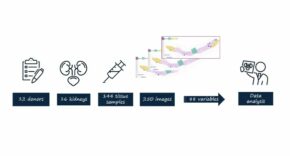
When a medical emergency strikes, can you be certain where your ventilators are? When lives are at stake, delays become deadly. Hospital administrators and clinicians are under enormous pressure to ensure vital equipment is properly tracked and can be found easily. Yet ageing hospital systems are not always up to the task.
The need to understand resource and inventory management has become much more obvious during the COVID-19 pandemic. Consider the Nightingale Trusts for example. Rapidly building hospital capacity without thinking through all the needs first failed to make effective use of resources. Originally planned to have 4,000 beds, the London Nightingale treated just 54 patients between April and May due to spare capacity in the city’s other hospitals.
Similarly, the Government spent £569m buying 20,900 ventilators to keep people alive during the pandemic, but lack of demand means NHS hospitals have used just a few of them. All but 2,150 of the machines it bought are still being held in a Ministry of Defence warehouse in case they are needed in the second wave of the disease. In Canada, there were similar issues with ventilator purchases. The 40,000 ventilators the government ordered came with a $1.1B price tag, but experts believe, even in a worst-case scenario, these machines may never be used.
The need is great, and hospitals are putting in the investment needed, but the allocation of resources is far from effective. UK hospitals continue to suffer serious shortages of vital medical equipment such as ventilators, pumps to administer drugs, and oxygen cylinders during the NHSs ongoing winter crisis. In addition, lost and stolen equipment costs the NHS millions each year; this is why NHS trusts have started running lost equipment ‘amnesties for the £100,000s-worth of equipment which goes missing each year.
The fruits of effective inventory management
So, what can be done to address the issue and create better patient outcomes? Trusts are turning to technologies that track equipment throughout the hospital workflow, often in real time. Wireless tracking solutions can help prevent loss and theft but also help inform asset management, maintenance and purchasing decisions. The Nursing Times suggests nurses spend roughly one week a month hunting for equipment and supplies. This time wasted can slow response times and delay procedures, potentially compromising patient safety.
The first step to being able to manage and optimise hospital capacity, critical equipment and supply inventories is to have access to the relevant information. With advanced data analytics capabilities and a data collection aid, an up-to-date data ingestion and data provisioning process can be implemented across all environments. Data, otherwise lost or siloed, is made intelligible and exploitable.
When this insight is viewed through an intuitive web-based interfaced, hospital managers can obtain critical information such as total capacity, inventory of specialised capacity such as ventilator beds, utilisation, and availability on a required frequency (daily, weekly, monthly). The use of AI and machine learning tools to model hospital processes and capital efficiency will provide new insights for strategic planning and the scaling of operations based on each trust’s unique context.
Real-time, detailed insight into hospital operations will deliver substantial financial and efficiency dividends. Inventory across all departments can be effectively managed, eliminating unnecessary searching times for tracked equipment and the needless hoarding and loss of stock. The equipment needed for surgery remains properly calibrated and logged and can be easily readied in the operating theatre for use when required. Effectively managed inventory also reduces the need for renting equipment, contributing to lower annual capital spend.
As our healthcare system tackles the second wave of the pandemic, it is crucial we overcome the mistakes and obstacles of the first. Having a real-time, comprehensive understanding of what equipment there is and where, will give trusts a key advantage now and in future health emergencies. Data and advanced analytics are the backbone of an effective inventory tracking and management system.
By Mark Frankish, Data Scientist, SAS UK & Ireland













